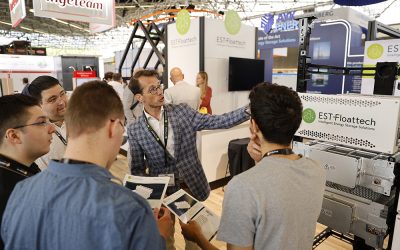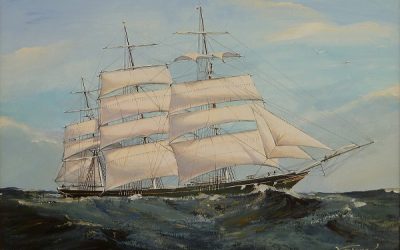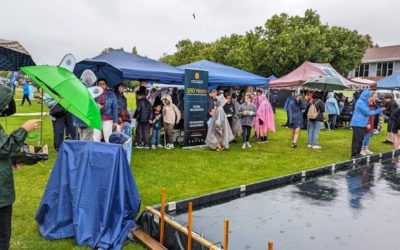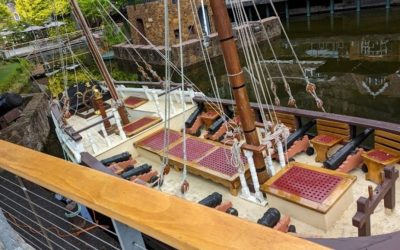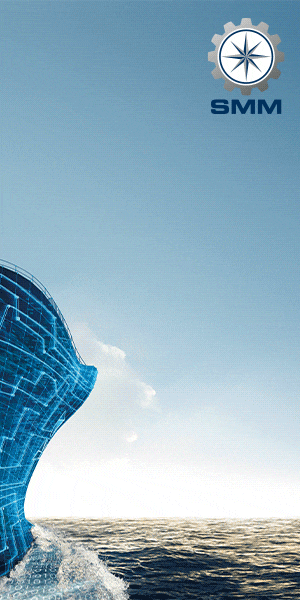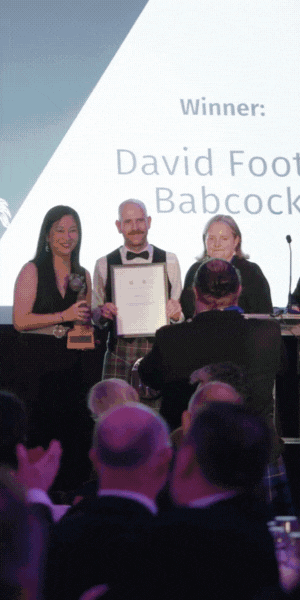Ship & Boat International eNews: December 2020
One of the most pressing challenges for ferry operators right now is shielding crew and passengers from COVID-19 infection – a critical task if the industry is to maintain public trust. From rigorous onboard cleaning routines and passenger distancing, to an increase in the use of contactless technologies, the ferry sector had to significantly adapt its operations in numerous ways this year.
One area that remains a little unclear is whether or not onboard air filtration systems can play a part in limiting the onboard spread of COVID-19 and other viruses. The topic was raised during the Worldwide Ferry Safety Association’s ‘Ferry Design and Operation in the Time of Covid’ webinar, and specifically in a presentation by Augusto San Cristobal (pictured), director of innovation and through-life support at Bronswerk Group, a Canadian HVAC and air systems specialist.
It's important to remember that there is no guaranteed method of avoiding COVID-19 contagion. This is a new disease that has caught world governments and healthcare providers off-guard, and, as San Cristobal explained, it would be remiss to prescribe courses of action in the absence of COVID-19-specific trials and case studies.
Firstly, San Cristobal made a distinction between the two main ‘forms’ of COVID-19, while acknowledging that the novel nature of this virus, combined with constantly emerging findings and contested information, makes it difficult to issue a definitive statement. From what we know, COVID-19 is carried on droplets of liquid, usually sized 5-10ᶣm, and is commonly spread by sneezing, coughing, singing and talking. These droplets can be transmitted, or ‘thrown’, to a distance of just under 2m. However, San Cristobal added, when these droplets are sized less than 5ᶣm, they are considered ‘aerosols’ that can remain in the air for extended periods. It’s in this airborne ‘form’ that the virus could potentially enter a ferry’s onboard HVAC system.
The feasibility of airborne transmission of COVID-19 is up for debate. “In general, the WHO says no,” San Cristobal said, while pointing out that the American Society of Heating, Refrigerating and Air-Conditioning Engineers (ASHRAE) has expressed concerns. HVAC systems can only go so far, San Cristobal added. “There is nothing that the air-con system can do to prevent the virus transmitting from person to person,” he explained. “In the context of COVID-19, fresh air is considered to be absolutely clean: this has to do with the concentration and potential concentration of the virus in such a gigantic volume.” The main threat lies in the air-conditioning system recirculating contaminated air within the ferry.
This has led ferry designers and operators to consider a number of options. One suggestion has been increased uptake of HEPA filters. There was an upsurge of interest in these air purifiers in 2020, given their claimed abilities to capture particles of 0.3ᶣm with a claimed efficiency rate of at least 99.97%. “These are more effective at filtering larger and smaller particles; it just happens that 0.3ᶣm is the most difficult size of particle to filter,” San Cristobal said. Unfortunately, HEPA filters come with a drawback: they can undergo significant pressure drop. “You can’t just install one on an existing platform, as this could reduce airflow – and reduced airflow can create fire hazards and hotspots,” he added.
And then there are ultraviolet (UV) lamps, operating with wavelengths spanning 10 nanometres (nm) to 400nm. San Cristobal addressed UVC, which is UV light with wavelengths of 200-280nm. “UVC is effective as it disturbs and deactivates the virus’ DNA and renders it harmless – it cannot reproduce and cannot make you sick,” he said. Handling these lamps can be tricky, though, and knowing where to put them is crucial. “The exposure time has to do with the location of the light and the airflow speed around the light,” San Cristobal said. “We want to guarantee 0.25 seconds exposure for every contaminant in the airflow. The ideal location for UVC lights in the air-handling unit is behind the filter, so that the filter prevents any dust or particulates from depositing on the surface of the light, reducing its intensity or compromising its capacity to radiate. It should also be placed in front of the cooling coil, so that we can benefit from the side effect of disinfection of the cooling coil and the drain pan, which are normally target locations for bacterial growth.”
UVC comes with its own set of hazards. If the wavelength is less than 230nm these lamps may produce ozone, which can cause serious damage to lungs. UVC lights can also damage the human eye if looked at directly, so each lamp would have to be safety-labelled and protected by an interlock, to prevent access to the lamp when it is turned on. UVC can also dry out surfaces, causing damage to rubber gaskets, plastics and insulation; as such, surfaces must be either protected or designed and produced with UVC-resistant materials.
Meanwhile, the jury is still out on how humidity might affect COVID-19 transmission: this approach may be effective but some have questioned the long-term effectiveness of humidifiers, especially when used as ‘stand-alone’ solutions or inadequately maintained (see Ship & Boat International May/June 2020, pages 26-27). “There is research that says that most viruses will be somehow deactivated when humidity is in the 50-55% range,” San Cristobal said. “There’s no study specific to COVID-19 but, if it follows the trend of other viruses, it’s an option we have, from an HVAC perspective, to minimise risk.”
It could be the case that one of the most viable solutions for now is obvious and simple, San Cristobal concluded: ferries have the benefit of guaranteeing passengers access to fresh air. Relying on a sensible policy of reasonable onboard social distancing, and providing plenty of access to the outside sections of the vessel, could prove less cumbersome than installing systems that may or may not filter out COVID-19, or that could cause harm to passengers and crew. “People have a better chance of avoiding contamination outdoors than indoors – not only on ferries, but everywhere,” San Cristobal later told Ship & Boat International. “Social distancing outdoors and the wearing of masks will also improve safety, as most of the respiratory droplets and even aerosols would theoretically be contained within the mask, limiting the throw and concentration of these contaminants around the infected person.”
However, heading outside won’t always be practical, he added, especially as winter descends and temperatures drop in the northern hemisphere. The trick may be to get as much fresh air into the passenger areas as possible: a goal easier to achieve aboard a hop-on passenger ferry in South East Asia than a ro-pax in the North Sea, perhaps, but still a goal worth pursuing.

